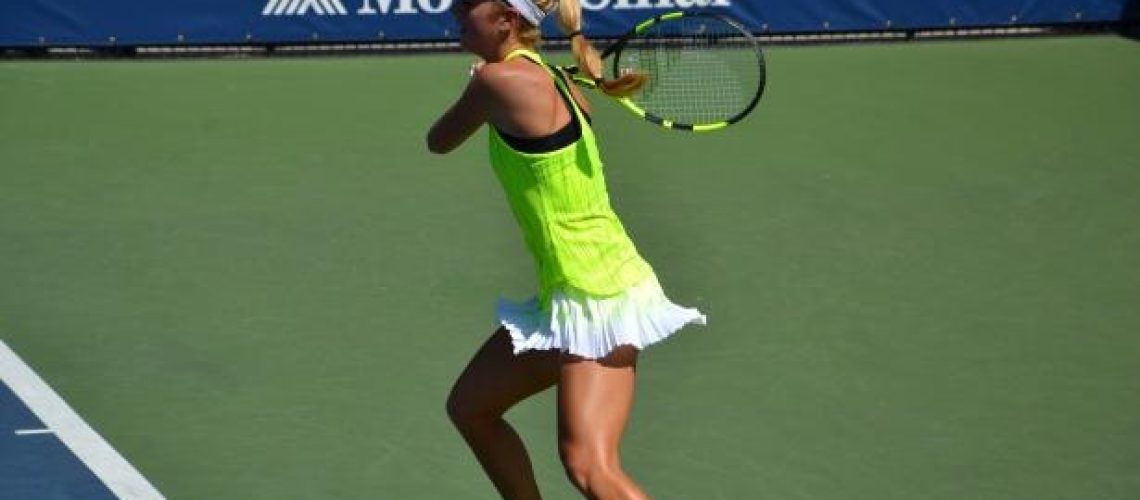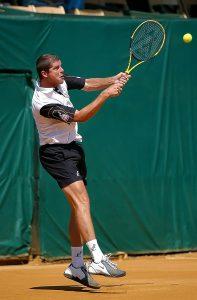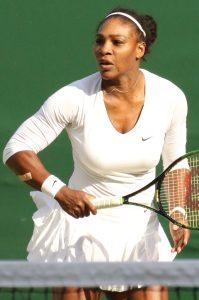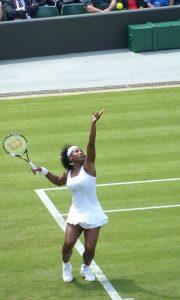We may earn money or products from the companies mentioned in this post.
Introduction

Tennis, often referred to as the “gentleman’s sport,” is a game that requires not only physical agility and skill but also a deep understanding of its unique terminology From “ace” to “deuce,” tennis has a language of its own that adds to the excitement and complexity of the game
A Brief Explanation of Tennis Terminology
Before delving into the importance of understanding “walk over” in tennis, let’s take a moment to explore some common terms used on the court When watching a match or reading about tennis, you may come across phrases like “love,” which means zero points, or “set point,” indicating an opportunity for one player to win the set These terms not only convey specific meanings but also contribute to the rich tapestry of tennis jargon
Another crucial aspect of tennis terminology is understanding different shots and strategies Words like “forehand” and “backhand” describe how players hit the ball with their racket, while terms such as “slice” and “drop shot” refer to specific techniques used during gameplay Having a grasp of these terms allows spectators and players alike to follow matches more closely and appreciate the nuances of each stroke
The Importance of Understanding “Walk Over” in Tennis
In any competitive sport, unforeseen circumstances can sometimes lead to unexpected outcomes In tennis, one such occurrence is known as a “walk over” This term refers to a situation where one player wins a match without having to compete against their opponent due to various reasons such as injury or disqualification
Understanding what a walkover means is crucial for fans, players, and officials involved in professional tennis events It affects tournament schedules, rankings, and overall fairness in competition For example, if a top-seeded player receives a walkover in the early rounds, they may face a lack of match practice, potentially affecting their performance as the tournament progresses On the other hand, an opponent who would have faced that player might feel disappointed at missing out on a chance to test their skills against a formidable adversary
Moreover, being aware of walkovers helps spectators interpret match results accurately If they see a scoreline that displays one player’s victory without any points or games played by their opponent, it indicates a walkover rather than an incomplete or abandoned match This knowledge enables tennis enthusiasts to stay informed and understand the dynamics of tournaments better
Overall, comprehending tennis terminology and specifically grasping the concept of “walk over” adds depth and context to our experience as fans or participants in this thrilling sport It enhances our ability to engage with matches more fully and appreciate the intricacies that make tennis such an exciting game
Definition and Explanation of Walk Over in Tennis

In the exciting world of tennis, a “walk over” is a term used to describe a scenario where one player is unable to participate in a match, resulting in their opponent being declared the winner by default This occurrence can happen for various reasons, such as injury or illness, personal issues, unforeseen circumstances, or even disqualification due to rule violations
Origin and History of the Term
The origin of the term “walk over” dates back to the early days of tennis It is believed to have originated from horse racing terminology, where it referred to a racehorse winning without any competition In tennis, it signifies an uncontested victory for one player due to the absence or inability of their opponent
Detailed Definition
1 Scenario when a player is unable to participate in a match: A walk over occurs when one player is unable to take part in a scheduled match This could be due to various circumstances that prevent them from competing on that particular day
2 Opponent being declared the winner by default: In this situation, since one player cannot compete, their opponent automatically becomes the winner without even having to step foot on the court
Reasons for a Walk Over Occurrence
1 Injury or Illness: One common reason for a walk over is when a player sustains an injury or falls ill before or during an event Such physical setbacks can hinder their ability to perform at their best and force them to withdraw from matches
2 Personal Issues or Unforeseen Circumstances: Sometimes players face personal problems or unexpected situations that require immediate attention and prevent them from participating in scheduled matches
3 Disqualification due to Rule Violations: In rare cases, a player may be disqualified from a tournament or match due to rule violations, which can lead to their opponent being awarded the victory by default
In conclusion, a walk over in tennis occurs when one player is unable to compete in a match, resulting in their opponent being declared the winner without having to play This term has its roots in horse racing and signifies an uncontested victory Various reasons can cause a walk over, including injuries, illnesses, personal issues, unforeseen circumstances, or disqualification due to rule violations
Impact and Consequences of Walkovers

Walkovers in sports can have a significant impact on various aspects of the game, including the players involved, tournament logistics, and the perspective of fans Let’s explore these consequences in more detail:
Effect on players involved
When a walkover occurs, it means that one player advances to the next round without even stepping onto the court or field For the winner, this may seem like an easy victory, but it can also be bittersweet They miss out on valuable playing time and the opportunity to showcase their skills against an opponent
On the other hand, the loser of a walkover faces a tough blow Not only do they have to accept defeat without even competing, but they also forfeit any chance of earning ranking points or improving their standing in the tournament
Tournament implications
The occurrence of a walkover can create ripples throughout a tournament’s organization and scheduling For players who were expecting to face either party involved in the walkover, it means adjusting their preparation strategy at short notice They might have been studying their opponents’ strengths and weaknesses or developing specific game plans that now go to waste
Tournament organizers and broadcasters also face challenges when dealing with walkovers Sudden changes in schedules can disrupt logistical arrangements and broadcasting plans, leading to last-minute adjustments that may not always be ideal
Fans’ perspective on walkovers
From a fan’s standpoint, walkovers can be disappointing or frustrating experiences depending on their favorite player’s involvement It is disheartening for spectators who were eagerly anticipating a thrilling match-up only to witness one player being granted an automatic victory due to unforeseen circumstances
Fans invest time, money, and emotions into following their favorite athletes or teams When a walkover occurs, they miss out on the excitement and suspense that comes with competitive sports, leaving them wanting more
Overall, walkovers have far-reaching consequences that impact players, tournaments, and fans alike While they may be an unavoidable part of the sporting world, it is crucial for organizers to minimize their occurrence and ensure fair competition for all involved
Case Studies and Notable Walkovers in Tennis History

In the world of professional tennis, walkovers have become an intriguing part of the sport’s history These instances, where one player is unable to compete and forfeits their match, have often left fans and players alike astonished Let’s delve into some case studies and notable walkovers that have occurred in major tournaments such as the Grand Slams, ATP/WTA events
Examples from Major Tournaments
1 High-profile walkovers: One of the most memorable high-profile walkovers happened during the 2007 Wimbledon Championships when defending champion Rafael Nadal withdrew due to a knee injury just moments before his match against Roger Federer was scheduled to begin This unexpected turn of events left fans disappointed but also highlighted the physical demands players face at such elite levels
2 Unusual walkover scenarios: In addition to high-profile cases, there have been several instances of unusual walkover scenarios throughout tennis history For instance, at the 1995 Australian Open, Jana Novotna was unable to compete in her quarterfinal match against Chanda Rubin due to a bee sting on her hand These bizarre reasons for walkovers add an element of unpredictability to the sport
Lessons Learned from Past Walkovers
Past walkovers have taught valuable lessons about sportsmanship, professionalism, and even prompted rule changes within the tennis community Players who gracefully accept or offer a walkover demonstrate respect for their opponents’ well-being while upholding fair play principles Additionally, governing bodies have implemented stricter guidelines to ensure players take their commitments seriously and minimize last-minute withdrawals
Walkover Trends
The frequency of walkovers remains relatively low in professional tennis compared to other sports but can still impact the quality of the game When high-profile players withdraw, it can lead to a loss in ticket sales and disappointment among fans who were eagerly anticipating their favorite player’s performance To prevent walkovers, organizers continuously explore measures such as injury prevention programs and stricter medical clearance protocols
In conclusion, case studies and notable walkovers in tennis history serve as reminders of the unpredictable nature of sports From high-profile withdrawals to unusual scenarios, these instances have shaped the sport’s landscape and prompted important lessons about sportsmanship and professionalism By understanding walkover trends and implementing preventative measures, tennis continues to evolve while ensuring fair play for all
Useful Links

What is a walkover in tennis?
What is a Walkover in Tennis & How Does It Affect Your …
What is a Walkover in Tennis? – TennisLovers
In Tennis, What Does A Walkover Mean and How … – YouTube
What is Walkover In Tennis? – Explanation and Origins
What Does Walkover Mean in Tennis – What are Examples?
Walkover In Tennis: Meaning, Examples & Why It Happens
Walkover. Meaning in tennis. Definition. Wiki. Terms
Tennis Betting Rules: What Happens if my Player Retires? …
Uncovering the Meaning of Walkover in Tennis
What Is A Walk Over In Tennis
What is a walkover in tennis?
What is a Walkover in Tennis? Meaning, Rules, Stats …
What is Walkover in Tennis?
What is the definition between Forfeit, Walkover, and Concede?
What Happens When a Player Retires, During Rain Delays …
Tennis Retirement Betting Rules【2023】🥇 Walkover Bet
What is walkover in tennis? (Things you must know) –
Tennis And Racquet Sports Rules
General Tennis House Rules – PointsBet Sportsbook






